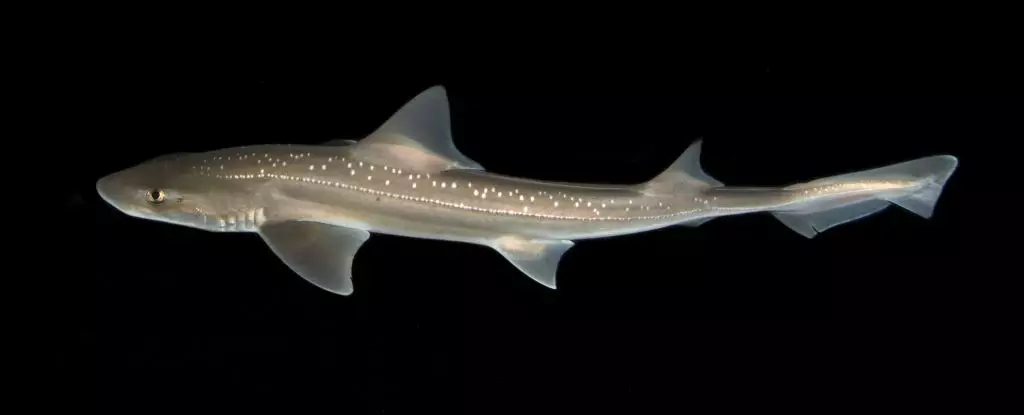For ages, sharks have been shrouded in silence, cloaked with an aura of fear that has haunted our oceans and captured our imaginations. This vile silence has fueled the mythos surrounding these apex predators, marking them as strange enigma. However, scientific exploration is now pulling back the veil, revealing a reality that diverges from the conventional narrative. Recent studies have uncovered that sharks, specifically the rig (Mustelus lenticulatus), are capable of producing noise, unraveling intricacies of their communication that were long thought non-existent.
Carolin Nieder from the Woods Hole Oceanographic Institute expressed her surprise upon making this groundbreaking discovery, stating, “I was under the assumption that sharks don’t make sounds.” If even seasoned researchers were misled by the grandeur of shark mythology, it opens up a compelling realm of inquiry into how much else we misunderstand about these misunderstood creatures.
A Journey into Sound
The auditory revelation from the deep is not merely an isolated incident; it opens an entirely new avenue for understanding the communication paradigms within the elasmobranch community. Sound travel over vast distances underwater is a common trait among marine animals, with many employing various methodologies to express themselves audibly. The results of Nieder’s research paradigm suggest that we might only be scraping the surface of a complex sonic tapestry woven in the depths of our oceans.
Before this study, elasmobranchs were seen as silent observers of the underwater world, bumbling about without so much as a whisper. It turns out that this dogma may be mere mythic fallacy. The unexpected emergence of deliberate clicking sounds from not only rigs but also other species has raised questions about their ecological roles and their interactions within their environments. Could the widespread silence across the elasmobranch family have been more about our ignorance than their inability?
The Experiment and Its Implications
The research involving the juvenile rigs was methodical, revealing the shortsightedness of previous assumptions. By applying a combination of behavioral training and underwater handling, the researchers demonstrated that the clicking noise is indeed a conscious behavior rather than an accidental artifact. Recorded under controlled conditions, the clarity and consistency of the clicks challenge the prevailing wisdom that silences sharks.
What compounds this revelation is the fact that all ten juvenile rigs recorded produced these clicks during handling, raising the question of whether these sounds are responses to stress—an evolutionary safeguard against predation. The fact that the clicking increased in the first ten seconds of handling suggests an instinctual response, perhaps a plea for help or a call to arms in the tumultuous world where survival is paramount.
Yet, this research anticipates a cascading effect in our understanding of marine life. Not only does it shed light on sharks, but it begs the question: how many more vocalizations are present within various species that have long been believed to navigate the seas inaudibly? The possibility of discovering a rich, sonic underworld filled with communication and interaction among marine species is tantalizing.
A Future Filled with Questions
While the researchers postulate on the mechanics of sound production—hypothesizing a percussive clashing of teeth—their work opens a portal to profound unanswered questions. Are these sounds meant for other rigs? Can they indeed hear these clicks? These are essential considerations as researchers embark on further investigations.
Also noteworthy is the suggestion that these ‘clicks’ serve a dual purpose: not only might they act as a response to stress, but could they also function in food acquisition? If rigs indeed mimic the sounds of snapping shrimps, then we are looking at a predator that employs both instinctive behaviors for self-preservation while engaging in cunning hunting strategies. This discovery challenges us to rethink the very nature of interspecies communication and survival tactics in marine ecosystems.
The Call for a New Perspective
As the dawn of this newfound awareness unfolds, we stand on the precipice of re-evaluating our assumptions about the behaviors of sharks and their relatives. The audacious call that emerges from these findings resonates beyond the aquatic world—it asks us to be more observant, to look beyond the veil of our preconceived notions, and to challenge the myths that have generationally shaped our understanding.
Above all, it reflects a broader conversation about humanity’s relationship with the ocean—an ecosystem that deserves greater advocacy and understanding. As we unravel these intricate layers of shark communication, one thing becomes abundantly clear: the narrative of the sea beast is unfurling, begging us to listen more closely and understand more fully.


Leave a Reply